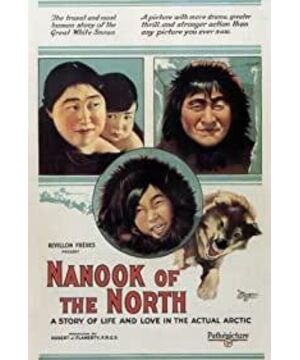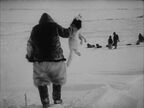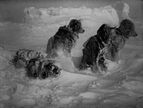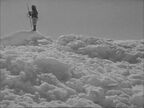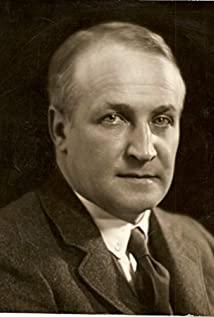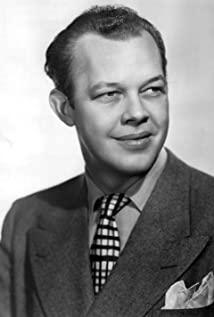This film has different degrees of development and influence on documentary film in terms of themes, shooting methods, and shooting concepts. It is worthy of reference and learning for every documentary filmmaker.
Breakthrough
in theme. In the 1920s, shooting adventure movies with local customs was very popular. But Vlahadi was the first creator to shift the lens from the presentation of the strange customs and wonderful scenery to the description of the daily life of an Eskimo family.
At the beginning of the shooting, in order to accumulate enough effective material, Flahadi spent a long period of time tracking the Nanuk family. In the process of getting along, the relationship between the two parties is very harmonious. The Eskimos live optimistically and sturdily in the most difficult environment in the world. Vlahadi respects and appreciates their pristine and natural way of life, and appreciates their indomitable spirit and tenacity when they struggle with the difficult living environment. The vitality is full of admiration. "The impulse to film "Nanuk in the North" stems from my unique feelings and deep respect for them. I want to tell their stories to others. That's the whole reason why I made this movie. "Vlahadi said. It is this true and strong feeling that prompted Flahadi, who had never made a movie, to persist in shooting "Nanuk of the North" after many setbacks, and finally made it a classic.
This film fully respects the cultural traditions of the Eskimos, cares about the true living conditions of human beings, and pays attention to the emotions and destiny of the characters. It shows the dignity and wisdom of human beings when fighting against nature and destiny. The relationship between people, the relationship between people and the natural environment, and the relationship between people and the social environment shown in the film are so real and moving.
Frahadi’s wife Francis Habinda said in an interview: "My husband pursues the soul, the human soul." It is precisely because of the precious humanistic care contained in the theme of the filming, "Nanuk in the North" "Far beyond all previous similar films shot with curious scrutiny, it is still admired by documentary filmmakers to this day.
The innovative shooting technique
"Nanuk of the North" laid the foundation for the development of documentary film in the method of shooting, and had a profound influence on the subsequent shooting mode of documentary film.
First of all, "Nanuk in the North" created a classic shooting mode for long-term follow-up of observational documentaries. Before filming "Nanuk in the North", Flahadi had almost zero knowledge of movies. At the beginning of his shooting in the Arctic, he didn't have any idea about shooting a complete film. He just got the material in the environment he was in day after day. In a few years, Vlahadi has a full understanding of life in the Arctic, and his understanding of the Nanuk family has also deepened. Gradually, he began to know what his lens was going to tell the audience, and in constant observation and shooting, he tried to restore the audience to the most real Eskimo world. The long-term relationship and follow-up with the subjects, day after day in-depth and careful observation, made "Nanuk in the North" far closer to reality and rich in connotation than the previous recorded images.
Secondly, the use of long shots in the film is also a successful practice for documentary films. Long shots are often used in documentary films. Using an equal amount of time and space to restore time and space can undoubtedly bring the reality of the documentary film and increase the authenticity of the film. Anyone who has watched "Nanuk in the North" must have been deeply impressed by one of the scenes. On an ice sheet, Nanuk threw the harpoon into the ice hole—we couldn't see what was inside the ice hole. For a long time after that, he pulled the rope tightly in various ridiculous postures, trying to drag the prey out of the ice cave. The people on the ice and the unknown creatures under the ice fight back and forth, like a funny tug-of-war performance. This long shot, in the form of a suspense, not only makes people laugh, but also makes the audience curious about the protagonist's behavior, which undoubtedly increases the viewability of the film. At the same time, the long-term stalemate between humans and prey under the use of long shots can make the audience feel more empathetic, and it can also show the protagonist's spirit of stubbornly fighting against nature and the hard life of Eskimos. It was not until the crowd came together to pull the prey ashore, that the audience suddenly realized that it turned out to be a seal under the ice. At this time, the original pleasant mood was replaced by a kind of depression, and the seemingly joyous and dramatic scene was actually a sad and difficult predation, which can not help but make people feel full of emotions and endless aftertastes. In addition, scenes such as "disembarking from the ship and ashore" and "building an igloo" in the film have also become the earliest examples of the use of long shots, and have provided the basis for the French film critic Bazin's long shot theory.
The creation of a unique view of
truth in documentaries. In a sense, the history of documentaries is a history of understanding of true concepts. Real issues are always linked to documentaries, intertwined and inseparable, no matter the past or today. Vlahadi’s understanding of reality is different from that of all previous documentary filmmakers, and his view of reality is not an accurate scientific record in the traditional sense. What he needs is the reality in front of the camera, the reality of the shooting result. He believes that only reasonable intervention in life in front of the camera is more real and reasonable. Therefore, Vlahadi did not hesitate to act in order to be true.
When filming "Nanuk in the North", under the guidance of Vlahadi’s unique view of reality, the film used documentary techniques and storytelling techniques of scene reproduction to simply and vividly reproduce the real life scenes of the Harrison Harbor Eskimo settlement , Introducing the technique of "reproduction" into the shooting of documentaries, creatively recording reality.
Take a few rehearsal scenes in the film. For example, at that time, the Eskimos did not use harpoons to catch walruses, but instead used rifles. But in order to allow Vlahadi to shoot more primitive scenes, Nanuk used primitive methods to hunt the walrus. For another example, the igloo, where the Eskimos live in the film, was built purely for the purpose of filming. In order to get more light, the igloo was cut in half during filming, and the Nanuk family had to get up in the icy wind. Even the character Nanuk is fictitious in the film. The original name of Nanuk is Arakari Arak, and the Nanuk family is not a family in real life. But in front of the camera, Nanuk is not just a character, he is a man of flesh and blood. The real "Nanuk" (the person Vlahadi photographed) is himself, not for the producer and the audience. The screen image of narrative clues.
Some people criticized Vlahadi for “fake”, thinking that the documentary should be filmed in a state where the protagonist is not disturbed. The author also believes that excessive rehearsal violates the documentary genre principle and will reduce the film’s authenticity to a certain extent. . Vlahadi believes that in artistic creation, creators behave actively, not objectively and calmly. This requires the perfect combination of non-fictional life scenes with imagination and poetry.
In fact, Vlahadi did not make any plot arrangements. The Nanuk family’s living conditions shown in the film can basically maintain consistency with reality, whether it is the struggle with the weather or the hardships of hunting, all of this They are real, but Flahadi cleverly captured and combined them together, which made the film have a moving power that cannot be achieved by a completely true record. Vlahadi’s concept of shooting influenced later documentary creators, and the shooting method of “removal” was also widely used in subsequent documentary shooting.
The Use of Narrative Methods in Drama Movies
In Vlahadi's view, even for recording films, viewing is indispensable. When shooting the film "Nanuk of the North", he introduced theatrical elements into the film, borrowed from the narrative skills of feature films at the time, combined and filtered the actual plot into the documentary of the real scene, and rationally adopted storytelling techniques. Narrate. The whole movie reproduces a long-disappeared lifestyle through various feature film elements. The author uses his own subjective sense of intervention to leave the audience with a scene that is infinitely close to the disappeared historical events. This established the storytelling tradition for later documentaries.
"Nanuk in the North" is structured into three main paragraphs: (1) During the warm weather, people repaired the original tools. (2) The hard life people face in cold weather. (3) Heavy snow. This structure method organically combines the documentary and the feature film, making the structure of the film more compact and logical, and more appealing and interesting. It greatly increases the viewability of the film while maintaining the original appearance of the documentary. .
Like the feature films of the time, "Nanuk in the North" uses subtitles to illustrate the background, explain the environment, and connect the development of the plot. The content of the subtitles is very concise and clear, which can save the time. While perfecting the story, it can minimize the impact on the interruption of the plot. The subtitles in some places are very interesting. For example, in the section of building an igloo, Flahadi cleverly used subtitles like "wait, one more thing", which aroused the psychological expectations of the audience and increased the interest of the film.
However, we also need to see that due to the particularity of its genre, documentaries must pay attention to the grasp of "degrees" when using storytelling techniques. They must not be too subjective to neglect the authenticity of the story, nor focus on the truth of the story. It emphasizes the vividness of the plot, while weakening the rational thinking and critical spirit that the documentary should have. As Professor Lu Xinyu of the School of Journalism of Fudan University said, "Art can become the style of documentary, but it cannot be its'bones'; a documentary can only talk about'art', but all documentaries only talk about'art'. If it is not, it is a plaything, and there is a danger of extinction or degeneration." We must realize that any technique of arrangement and production is to serve the overall creation of documentaries, and the method of storytelling is always just a way to better record the truth. This kind of auxiliary means can't give up the original and the last, which makes the photographed works insincere.
"Nanuk in the North" has irreplaceable guiding significance in constructing the storyline of the documentary. To this day, how to perfectly integrate the real record with the artistic expression is still a problem that every documentary worker needs to think seriously.
Concluding remarks
Eric Barno once commented: The film "Nanuk of the North" is not only the crystallization of Vlahadi’s three Arctic expeditions, but also the product of Vlahadi’s fusion of Eskimos. It is Vlahadi’s approach to uncivilized peoples The admiration of culture, the regret for the imminent demise of this precious culture, the confusion about the entry of Western civilization into uncivilized areas, and even the confusion about one's own behavior are the result of emotions. The biggest inspiration of "Nanuk of the North" to the audience is just as Flahadi said: "You ask me, how can the movie make the public feel that they are in love with those strangers? "Nanuk of the North" is a very good one. An example. Since it came out, tens of thousands of people have watched this movie-he has traveled the whole world. What they saw is a real person, a person who is always happy despite facing survival difficulties... "
From today's point of view, the simple or even rough images in "Nanuk of the North" still have the most touching power. All this comes from Flahadi's heartfelt love and respect for images and life, his unique insights and accurate grasp of the truth, and his accurate expression of the original ecological society full of shocking power.
This film not only created an anthropological documentary genre that used images to record society, but also provided a creative mode and creative concept that is still in use for documentary movies. It has a leap-forward development and a profound impact on documentary movies that cannot be ignored.
View more about Nanook of the North reviews


